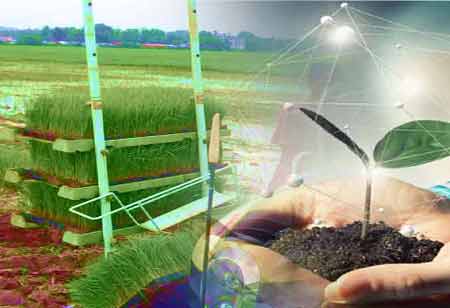Thank you for Subscribing to Agri Business Review Weekly Brief
Innovations in Agricultural Technology: Shaping the Future of Food Production
With the global population projected to reach nearly 10 billion by 2050, the demand for food is expected to surge by 70 percent.

By
Agri Business Review | Wednesday, June 14, 2023
Stay ahead of the industry with exclusive feature stories on the top companies, expert insights and the latest news delivered straight to your inbox. Subscribe today.
As the global population grows, innovative agricultural technologies are crucial to meet the increasing demand for food while ensuring sustainability.
FREMONT, CA: With the global population projected to reach nearly 10 billion by 2050, the demand for food is expected to surge by 70 percent. However, approximately 9.9 percent of the world's population still suffers from hunger, highlighting the daunting task of feeding billions more in the coming decades. The agricultural industry must turn to innovation and technology to address this challenge and overcome the uncertainties posed by environmental changes. This article explores some of the groundbreaking innovations in agriculture technology to watch out for in 2023. These advancements have the potential to revolutionize farming practices and help ensure sustainable food production.
Honey bees are critical in crop pollination and contribute USD 20 billion to U.S. crop production. There has been a rise in innovative agricultural equipment to safeguard these essential insects and enhance their pollination capabilities. Certain systems utilize commercially reared bees to deliver targeted crop controls through pollination. These systems replace chemical pesticides with an environmentally safe crop protection approach. Scientifically designed bumblebee hives enable bees to carry trace amounts of pest control powders on their legs as they travel within the field, minimizing the need for spraying and tractors. This innovation supports sustainable farming, improves crop yield, and preserves soil quality, making it suitable for various crops and farms of all sizes.
Precision agriculture is a resource management strategy that leverages data collection, processing, and evaluation to help farmers optimize soil quality and productivity. This innovation in agriculture technology relies on big data and remote sensing systems, drones, robotics, and automation to provide insights and enhance decision-making. It enables farmers to precisely monitor and control moisture levels, soil conditions, and microclimates to maximize crop output. Growing demand for crop health monitoring and increasing government support will drive the global precision farming market to USD 16.35 billion by 2028.
Indoor vertical farming offers a solution to the limitations faced by traditional farming methods. This technology involves growing produce on vertically stacked shelves within a closed and controlled environment. Hydroponics and aeroponics are commonly used in indoor vertical farms. Hydroponics cultivates plants in water and nutrient solutions, while aeroponics suspends crop roots in the air and intermittently sprays them with water and nutrients. Growers can achieve healthier and more substantial yields by controlling variables like light, temperature, water, and CO2 levels. Indoor vertical farming reduces water usage by 70 percent, conserves energy, and often employs robots for harvesting and planting, reducing labor costs.
Farm automation integrates machinery, computer systems, electronics, sensors, and data management to improve equipment operation, decision-making, and efficiency. By automating tasks and reducing human input and error, this technology saves labor time, increases yields, and optimizes resource utilization. Farmers now rely on automated harvesters, drones, autonomous tractors, and robotic seeding and weeding to transform their cultivation practices. Thanks to automation, farmers can focus on more critical functions, which frees them from menial and repetitive tasks. It enhances productivity and provides farmers with more leisure time to spend with their families.
The advancements discussed above offer promising solutions for optimizing crop production, protecting pollinators, conserving resources, and streamlining farming operations. By embracing these innovations, the agricultural industry can overcome the challenges posed by population growth and environmental changes, shaping the future of food production and ensuring a more food-secure world.





